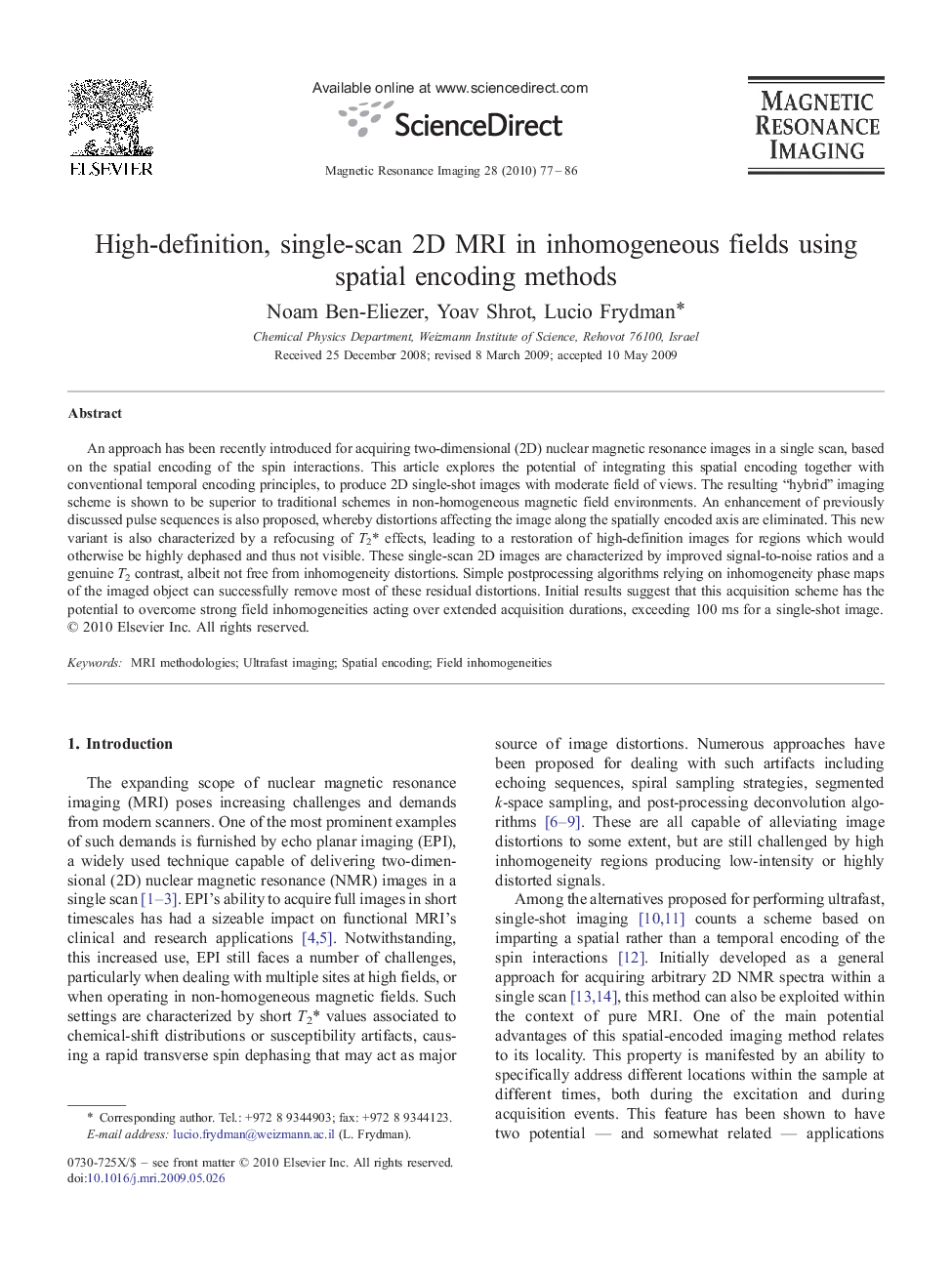| Article ID | Journal | Published Year | Pages | File Type |
|---|---|---|---|---|
| 1806979 | Magnetic Resonance Imaging | 2010 | 10 Pages |
An approach has been recently introduced for acquiring two-dimensional (2D) nuclear magnetic resonance images in a single scan, based on the spatial encoding of the spin interactions. This article explores the potential of integrating this spatial encoding together with conventional temporal encoding principles, to produce 2D single-shot images with moderate field of views. The resulting “hybrid” imaging scheme is shown to be superior to traditional schemes in non-homogeneous magnetic field environments. An enhancement of previously discussed pulse sequences is also proposed, whereby distortions affecting the image along the spatially encoded axis are eliminated. This new variant is also characterized by a refocusing of T2* effects, leading to a restoration of high-definition images for regions which would otherwise be highly dephased and thus not visible. These single-scan 2D images are characterized by improved signal-to-noise ratios and a genuine T2 contrast, albeit not free from inhomogeneity distortions. Simple postprocessing algorithms relying on inhomogeneity phase maps of the imaged object can successfully remove most of these residual distortions. Initial results suggest that this acquisition scheme has the potential to overcome strong field inhomogeneities acting over extended acquisition durations, exceeding 100 ms for a single-shot image.
